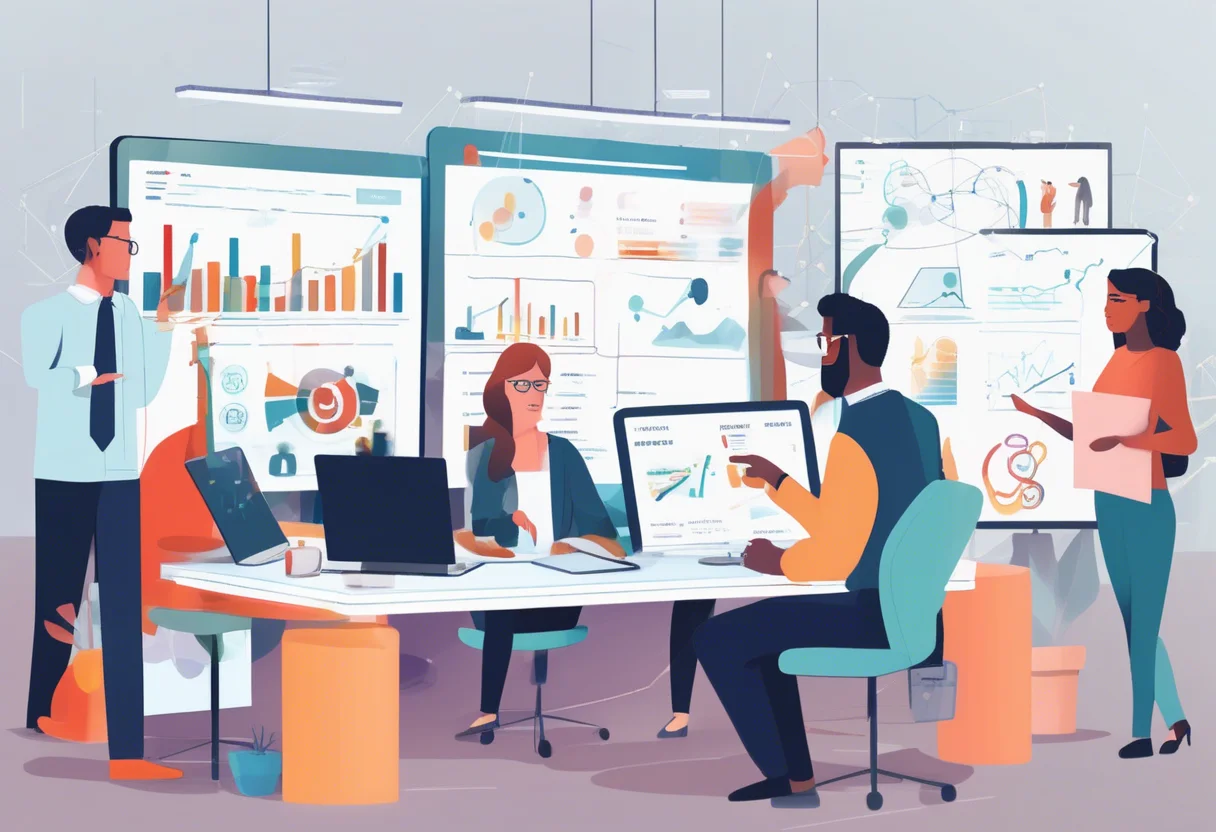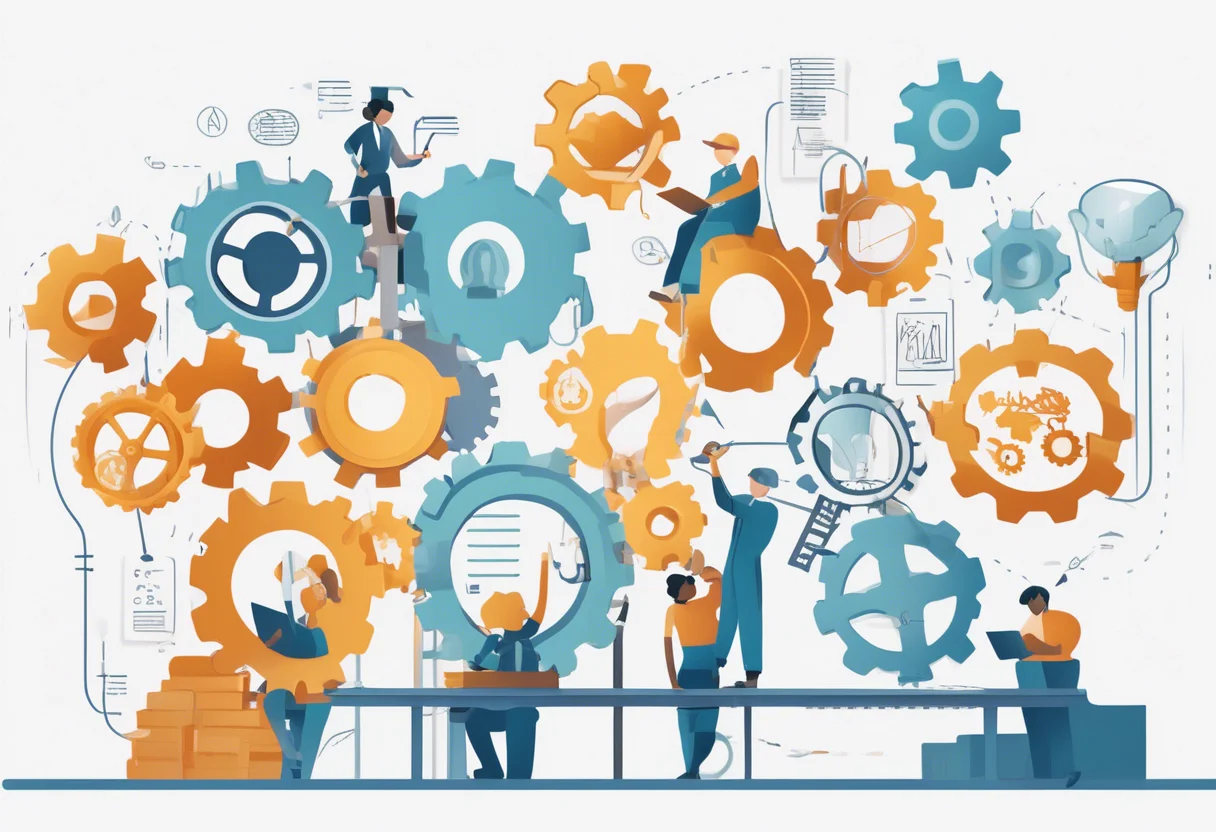
Artificial Intelligence isn't some far-off idea anymore—it's here and changing the way we do things. In Learning and Development (L&D), AI is making a big difference. It brings new ways to personalize, make things more efficient, and grow. Did you know that 77% of organizations are already using AI to boost their training programs? If you're wondering how AI can shake up your L&D strategy, you're in the right spot. This article looks at how AI can change L&D, showing you how to use AI strategies, help develop skills, and track its effects. Whether you're an L&D expert or a business leader, getting a handle on AI could help you build a more flexible and ready-for-the-future team. Let's get started!
Understanding AI's Impact on Learning and Development
AI in L&D: Transformative Changes and Innovations
AI is revolutionizing Learning and Development (L&D) by offering personalized learning experiences. It adapts to individual learning speeds and preferences, making it easier to master new concepts. In the U.S., AI can aid in developing skills such as moral reasoning and creative thinking, which are increasingly important as AI takes on more routine tasks.
To maximize AI's potential in education, it's crucial to incorporate AI literacy into teacher training. AI-powered tools offer personalized assistance, reducing student stress and enhancing mental health. Professional development programs are fundamental in empowering educators to confidently teach AI-related topics. Platforms like DreamBox exemplify AI's potential by customizing lessons to suit each student's learning style.
Overcoming Challenges in AI Integration for L&D
Integrating AI into L&D comes with its own set of challenges. A significant hurdle is ensuring equitable access to AI tools for all students. Teacher training must include AI literacy, yet schools often face resistance to change and resource limitations.
Ethically deploying AI requires gaining the support of parents and teachers, which can be challenging. Curriculums need flexibility to incorporate AI education, but they are often too rigid. Ongoing investment in professional development is essential to equip teachers with AI skills. Furthermore, balancing AI's advantages with concerns about data privacy and bias remains a complex issue.
Step-by-Step: Implementing AI in Your L&D Strategy
Identify Business Problems and Align with AI Strategy
Start by figuring out the business problems you want AI to help solve in your Learning and Development (L&D) strategy. You need a clear view of what’s blocking your organization's growth and efficiency. Consider issues such as:
- Skill gaps
- Low employee engagement
- Retention rates
- Productivity slowdowns
Once you’ve pinpointed these problems, align them with your business strategy. This way, your AI projects will directly support your goals, like boosting employee skills, improving learning results, or making operations smoother. For example, if low engagement in training is a problem, AI could help by creating personalized learning paths to keep folks interested and learning.

Understand Business Objectives and Conduct a Data Audit
Clarify AI's Role in L&D Objectives
Know what AI can do for your L&D goals. AI can offer personalized, data-driven insights that can transform learning processes. First, clarify what you want from AI:
- Speed up learning
- Improve content delivery
- Boost engagement
Clear goals will steer your AI strategy, ensuring tech use is purposeful and focused on results. View AI as a tool to enhance human skills, not replace them, complementing what your team already does well.
Conduct a Thorough Data and Infrastructure Audit for AI Readiness
Take a good look at your data and tech setup to see where AI fits best. Check if your data is organized and easy to access, and spot any data silos. Evaluate your IT infrastructure to ensure it can handle AI, considering factors like data storage, processing power, and network security. This audit will reveal what needs upgrading to support AI, ensuring your systems are ready to go.
Assess AI Readiness Using an AI-First Scorecard
Evaluate Current AI Adoption and Capabilities in L&D
Assess where you stand with AI now. Use an AI-First Scorecard to evaluate the AI tools and tech you’re already using. This scorecard should cover:
- Data readiness
- Tech infrastructure
- Employee skills
- Company culture
Knowing your current position helps you identify opportunities for AI growth or integration. This evaluation highlights gaps in skills, tech, and processes needed for AI.
Identify Gaps and Prioritize Actions for AI Deployment in L&D
After evaluating your AI capabilities, identify the gaps to fill for a successful AI rollout in L&D. These might include:
- Data integration issues
- Lack of AI expertise
- Tech shortfalls
Prioritize actions to address these gaps based on their impact on your L&D goals. This prioritization helps plan your AI rollout, ensuring resources are used smartly and reducing risks.
Leveraging AI for Skill Development and Upskilling
AI-Powered Personalized Learning in L&D
AI tools are revolutionizing the learning experience by creating tailored learning paths. These tools provide quick feedback and personalized career advice, enhancing the effectiveness of workforce training.
- K-12 Education: Introducing AI early can spark curiosity and creativity, preparing students for future job markets.
- Professional Development: Programs are available to help teachers integrate AI into the classroom, guiding students through AI lessons.
The National Science Foundation supports AI education through initiatives like the National AI Research Institutes, which connect students and researchers with AI technology. For example, a community college might implement AI-driven platforms to customize coursework according to each student's needs.
Closing Skills Gaps with AI in Learning and Development
The U.S. government is actively promoting AI skills through education and workforce funding. Key initiatives include:
- Career and Technical Education: AI is being integrated into apprenticeships and training programs.
- Registered Apprenticeships: These are expanding to include AI roles, aligning training with employer needs.
- Community Colleges: Seen as pivotal in AI workforce training, they blend traditional education with hands-on learning.
Tax incentives, such as those under Section 132 of the Internal Revenue Code, encourage employers to offer tax-free reimbursement for AI training, thereby boosting private investment in AI skills. Additionally, the National Science Foundation funds scholarships and practical experiences to develop an AI-ready workforce across all education levels.

For more information, you can refer to the following resources:
- AI and the Future of Workforce Training
- Advancing Artificial Intelligence Education for American Youth
- America's AI Action Plan
- AI-Ready Workforce Framework
Measuring the Impact of AI in L&D
Key Metrics for Evaluating AI's Effectiveness in L&D
AI is revolutionizing the way we approach learning and development by offering tools that enhance personalized learning paths and monitor individual progress in real-time. This approach transcends traditional metrics like completion rates, providing a deeper dive into individual strengths and weaknesses.
Smart Assessment Systems
AI-powered systems automatically create and grade tests, delivering instant and tailored feedback. These systems leverage learning analytics to examine data such as engagement and scores, identifying trends that can guide strategic decisions.
Predictive Insights
AI's ability to forecast skill gaps enables more targeted training interventions. Additionally, it tracks behavioral changes and correlates learning data with business KPIs, effectively demonstrating real ROI.
Enhanced Learning Experience
AI-powered virtual assistants provide real-time support, significantly enhancing the learning experience. For further insights, explore AI in L&D.
AI-Driven Assessments and Performance Improvement in L&D
AI plays a crucial role in evaluating learning aptitude and memory tests, swiftly identifying errors. The integration of generative AI accelerates content creation across various languages and formats, ensuring content remains relevant.
Personalized Recommendations
AI-powered recommendation systems propose new content tailored to learners' needs, fostering continuous growth. By analyzing industry trends and job market data, AI identifies skill gaps and suggests personalized learning plans.
Alignment with Organizational Goals in L&D
For AI to be effective, it must align with organizational objectives and be subject to human oversight to validate AI-generated content. These methodologies ensure that AI not only evaluates but actively enhances performance, resulting in tangible improvements. Learn more about these advancements in AI in Learning and Development.
FAQ
How Does AI in L&D Personalize Employee Learning?
AI can tailor learning experiences by assessing each employee's skills, preferences, and performance. It adjusts content and pace to suit individual needs, acting like a personal tutor and reducing instructors' workload. This personalization leads to more focused and flexible learning. Companies can leverage AI tools to craft interactive learning experiences that adapt as employees progress or encounter challenges.
For instance, an AI-powered platform can evaluate an employee's current skills and learning preferences. It then customizes training, providing additional support where needed, and accelerates progress in areas where the employee already excels.
For more details, check out the U.S. Department of Education guidance.
What Are the Benefits of AI in L&D for Corporate Training?
AI enhances corporate training by creating engaging learning paths that improve retention. It optimizes resource use by managing administrative tasks, allowing trainers to focus on more critical activities. AI tools offer real-time feedback and analytics to monitor learner progress and quickly identify skill gaps. By promoting critical thinking and problem-solving through adaptive learning, AI prepares employees for complex workplace challenges.
The U.S. Department of Education provides further insights into these benefits.
How to Measure AI's Impact on Learning and Development?
Companies can utilize AI-generated analytics to track learner engagement, course completion rates, and skill improvements over time. AI platforms equipped with surveys and feedback tools can assess learner satisfaction and training effectiveness. By analyzing performance metrics before and after AI implementation, companies can determine improvements in productivity and knowledge retention.

Long-term monitoring of career growth and the application of new skills on the job also demonstrate the impact of AI training.
The U.S. National Science Foundation offers resources on this approach.